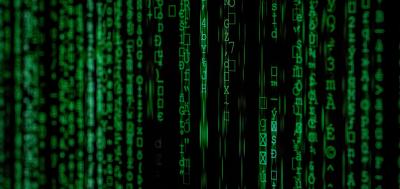Digital forensics is a rapidly growing field centered on the strategic identification, collection, and analysis of electronic evidence. Transmitted in binary form and stored on many devices, this digital evidence plays a strong role in prosecuting electronic crimes, criminal investigations, and even a growing range of corporate concerns.
Regardless of the sector or use case, digital forensics provides a compelling opportunity: the ability to obtain and analyze a wealth of electronic data, which can establish the facts of various cases and complement other forms of evidence. Electronic evidence can be discreetly tampered with, making it difficult to verify as authentic.
Some guidance can be found via the federal rules of evidence in digital forensics. Still, it's increasingly clear that strict documentation should be built into acquiring and handling electronic evidence. Therein lies the value of the digital forensics chain of custody—a powerful tool for tracking and protecting many forms of evidence. The chain of custody offers an essential framework for today's digital forensics professionals.
What Is Chain of Custody in Digital Forensics?
Chains of custody determine how digital forensic evidence moves through its full lifespan, encompassing critical processes such as collection, protection, and analysis. The chain of custody in digital forensics forms an electronic trail organized chronologically to make it easier to determine where evidence was initially gathered and what has happened to it since then.
Keeping track of evidence is crucial if criminal cases go to trial. In such situations, a chain of custody documentation ensures that whoever was in "charge of the evidence at any given time can be known quickly and summoned to testify during the trial if required." Furthermore, chain of custody can establish the relevance of this evidence, revealing that it was tied to the original crime and has since remained in an unaltered condition.
Evidence (and how it's handled) must be meticulously documented at every step, with critical details including who has collected or analyzed this evidence, when it occurred, and under what circumstances. According to the National Institute of Standards and Technology (NIST), the chain of custody should also show why evidence transfers occur and under what circumstances.
The overarching purpose of the chain of custody protocol is to boost the integrity of each piece of evidence, which—if properly handled—has a powerful place in today's most complex and impactful investigations. However, to achieve this end, all involved must closely follow the chain of custody requirements, beginning with the police officer on the scene of the alleged crime and extending through investigations and courtroom procedures.
Chain of Custody Form
Chain of custody forms provide permanent records detailing how digital evidence has been obtained, dealt with, and handed off. These forms must be updated whenever somebody new has the opportunity to examine or analyze sensitive digital evidence. These updates create a chronological record and deliver details regarding how and why each piece of evidence was collected. Information reported on this form might include:
- A description of the electronic evidence, often including file names or hardware information
- Methods for collecting that evidence, such as seizing physical assets
- Details about physical locations in which digital evidence has been stored
- Check-in and check-out details verifying who had access to the evidence at any given time
Digital Chain of Custody Examples
Although digital chains of custody are strongly associated with criminal investigations, these play a growing part in preserving data integrity across many industries. Below, we highlight a few increasingly common use cases that demonstrate the dynamic and far-reaching potential for digital evidence in forensic science:
Healthcare and Public Health Sector
Establishing a strict chain of custody is necessary during forensic laboratory testing, in which tried-and-tested security protocols (such as tamper-proof sealing) ensure the integrity of all physical evidence. However, additional documentation strategies may be required as digital evidence becomes more common.
Digital forensics may play into healthcare fraud investigations involving inflated service costs or improper billing. Additionally, it may influence medical malpractice cases. In either scenario, chains of custody ensure that various types of evidence can be found admissible in court. Chains of custody can contribute to compliance, too, especially surrounding the Health Insurance Portability and Accountability Act (HIPAA).
Financial Services Sector
A growing subfield of digital forensics involves the fintech industry, in which advanced technological solutions are integrated into financial services. While cutting-edge financial technologies offer exciting opportunities to expedite and innovate financial processes, these also open the door to potential abuse from bad actors, including fraud or extortion.
A report in the journal Forensic Science International: Digital Investigation reveals how digital forensics expertise can be leveraged to "provide end-to-end forensic analysis and post-mortem reconstruction of incidents involving technical financial activity."
As new technological solutions are used and abused, chains of custody will be critical tools for gathering evidence of electronic crimes and bringing perpetrators to justice. As Retire-IT CEO Kyle Marks explains, this is crucial for ensuring "successful IT asset disposition (ITAD) and data breach prevention."
Overcoming Challenges in Maintaining Chain of Custody in Digital Forensics
Though strict protocols dictate how electronic evidence is collected and handled, there is always a strong potential for this evidence to be tampered with or rendered inadmissible. As CISO MAG points out, "Electronic evidence challenges the court due to its integrity, where the absence of proper guidelines and the non-availability of appropriate explanations of the details and acquisition gets dismissed."
These challenges are not impossible to overcome, but they call for extensive training and a clear commitment to preserving the integrity of electronic data. Key concerns worth addressing as we take steps to improve the chain of custody in digital forensics include:
- Ethics and compliance concerns – Compliance is critical to ensure the authenticity and security of chain of custody documentation. The evidence verified through chain of custody can significantly impact criminal cases. If any tampering occurs, it may render the evidence inadmissible or may even influence the outcome of the case. Ethical concerns abound, sadly, and with traces of tampering difficult to reveal, it can be tempting for many to take shortcuts or otherwise compromise vulnerable evidence.
- Chain of custody maintenance –Maintaining a reliable and secure chain of custody requires effort and oversight. Strict protocols must be followed to create a strong paper or digital trail. This chain of custody must be preserved so that it can be consulted as needed throughout the legal process. As new technologies emerge, maintenance and control opportunities may expand, such as blockchain-enabled chains of custody.
- Protecting digital evidence – It is important to be cautious when handling digital evidence, as it can be easily compromised. Therefore, one of the fundamental principles of the chain of custody is to avoid working with the original copy. Instead, the original evidence should be preserved as a master copy, and experts should work with duplicate copies for analysis. However, despite taking such precautions, there are still many ways in which digital evidence can be unintentionally or deliberately tampered with.
- Exploring new technologies – Disruptive solutions like the blockchain promise to shake up our conception of the chain of custody. Blockchain characteristics such as immutability could make the chain of custody more efficient and secure. Yet, it is clear that more research is necessary to uncover both opportunities presented by the blockchain and potential challenges or downsides.
Advance Your Digital Forensics Career Today
Do you feel drawn to the dynamic field of digital forensics? Opportunities abound within this important niche, but developing critical skills takes years of targeted training. Champlain College Online could help you gain a strong start. Our digital forensics and incident response graduate certificate provides a specialized curriculum tailor-made to meet the unique demands of aspiring digital forensics professionals. Reach out today to learn more.
You May Also Like
Request Information
Connect with our admissions team to learn more about Champlain College Online today.

Request Information
I acknowledge that, by clicking the "submit" button, I am giving my express written consent to Champlain College and its representatives to contact me about educational opportunities via email, text, or phone, at the phone number above, including my mobile phone, using an automatic dialer, or pre-recorded message. Message and data rates may apply. I understand that my consent is not a requirement for enrollment, and I may withdraw my consent at any time.






